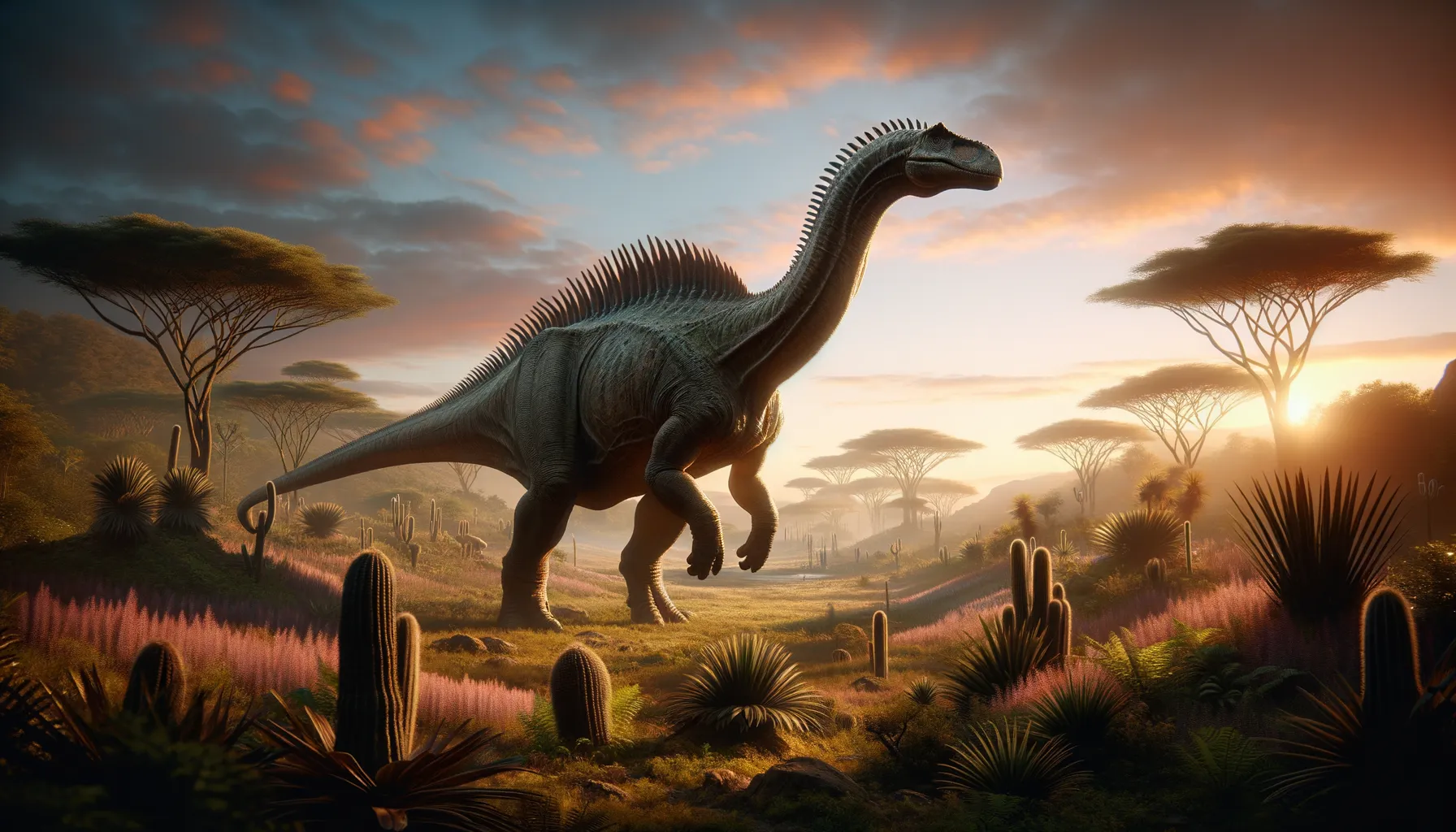
Dicraeosaurus
The short-necked sauropod with double spines.
Period
Jurassic
Length
Measures roughly 12 meters in length.
Height
Stood about 3 meters tall at the hips.
Weight
Estimated to weigh around 4 tons.
Dicraeosaurus, a lesser-known sauropod, thrived during the Late Jurassic period. Known for its unique double-spined vertebrae, it was smaller compared to its gigantic relatives. This herbivorous dinosaur roamed in what is now Africa, perhaps strategically utilizing its shorter neck to graze on low vegetation. Fossil evidence paints a picture of a stout, yet elegant creature that adds a piece to the puzzle of prehistoric life. Dicraeosaurus contributes valuable insights into the diversity and adaptability of sauropods.
Diet
Dicraeosaurus was a herbivore, feeding primarily on low-lying plants. Its shorter neck suggests it adapted to foraging closer to the ground, which could include ferns and other soft vegetation.
Hunting
As a herbivore, Dicraeosaurus did not hunt. Instead, it focused on foraging for plants in its surroundings. It's thought to have had a gentle grazing strategy, utilizing its specialized neck and teeth.
Environmental challenges
Dicraeosaurus lived in a time of shifting climates and landscapes, which could have presented challenges in finding food and avoiding predators. Its environment likely had periods of drought, requiring adaptation to limited resources. The presence of larger predators also meant Dicraeosaurus needed to stay near herd members for protection.
Speed
Dicraeosaurus moved sluggishly due to its bulk.
Lifespan
It likely lived for several decades.
First discovery
First found in Tanzania in 1914 by Werner Janensch.
Fun Facts
- Dicraeosaurus lived during the Late Jurassic period, around 150 million years ago.
- Its name means 'forked lizard,' owing to the forked spines on its vertebrae.
- Unlike some of its sauropod relatives, Dicraeosaurus had a relatively short neck.
- This dinosaur was found in what is now Tanzania, Africa, suggesting a habitat of lush landscapes.
- Dicraeosaurus was herbivorous, feeding primarily on low-lying plants and vegetation.
- Although it was a smaller sauropod, Dicraeosaurus was still massive, measuring around 40 feet long.
- Fossils of Dicraeosaurus were first discovered in 1914 by a German expedition.
Growth and Development
Dicraeosaurus juveniles likely experienced rapid growth, common among sauropods. Their development involved expanding their body size significantly to deter predators. This rapid growth also ensured they could reach vegetation needed for sustenance. As they matured, their distinctive double-spined vertebrae became more pronounced.
Habitat
It lived in semi-arid regions with open areas suitable for grazing. The habitat was likely interspersed with streams or lakes that supplied the necessary water. Surrounding vegetation provided shelter and food, making these areas favorable living conditions.
Interaction with other species
Dicraeosaurus likely interacted with other herbivorous dinosaurs, competing for similar plant resources. It coexisted with larger species, such as Brachiosaurus, adapting to different grazing zones to avoid direct competition. Its presence may have also attracted attention from Jurassic predators, requiring a community lifestyle for protection.
Natural lifespan
Dicraeosaurus may have lived up to 50-60 years in the wild.
Reproduction
Dicraeosaurus likely reproduced by laying eggs, as do most dinosaurs. It is believed that they may have chosen secluded nesting sites for protection. Hatchlings emerged with instincts to follow older, more experienced herd members, ensuring their survival and learning.
Social behaviour
Dicraeosaurus may have lived within herds, which provided protection from predators. Herding behavior allowed individuals to communicate and look out for threats collectively. This social structure also facilitated breeding opportunities and mutual care for the young.
Fossil locations
Fossils of Dicraeosaurus have primarily been discovered in Tanzania, particularly within the Tendaguru Formation. There, paleontologists have uncovered several well-preserved specimens that have greatly informed knowledge about this sauropod. The region remains one of the richest sources for finding late Jurassic period fossils.
